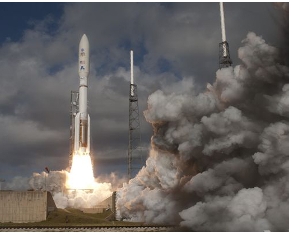Simulating the Mars mission Computational curiosity Landing system
IT has been key to successfully landing the rover robot Curiosity, on Mars earlier this week. Mars missions in the past have not had a great track record. But the landing on Monday proved that plenty of preparation, training, assessing all possible eventualities and extensive simulations can minimise project hiccups and disasters that have plagued many previous missions to the red planet.
The Mars Science Laboratory (MSL) mission to Mars, was launched by NASA's Jet Propulsion Laboratory (JPL) on 26 November 2011. It took eight months to land the Mars rover, a robot called Curiosity, in Mars' Gale Crater. Curiosity touched-down on 6 August at 06:32 BST.

The rover will spend the next two years on the red planet. The autonomous machine has been designed to behave like a human, analysing rock samples, looking for evidence that would prove Mars may have supported life in the past.
Curiosity is able to explore a greater range than any previous Mars rover, it will analyse samples of the planet's rocks and study the climate, while sending images and data back to Earth.
Missions like these often end in failure. "Even the most conservative estimates say that the failure rate of IT projects is more than 30% and it's probably higher," Michael Krigsman, CEO of tech consulting firm Asuret told the Wall Street Journal. However, it is clear that IT has been critical in the simulation, power, landing and data gathering of the project.
Simulating the Mars mission
NASA's Jet Propulsion Laboratory (JPL) partnered with Siemens to use technology which could withstand the enormous challenges such as shock, vibrations and temperatures, along with capturing solar energy and sending signals back to earth. With Siemen's expertise, JPL was able to digitally design, simulate and assemble the Rover before any physical prototypes were built.
Computational curiosity
Curiosity is powered by three BAE Systems RAD750 processors. These control instrumentation like an X-ray spectrometer, a laser-induced breakdown spectroscopy system, organic sample analysis systems, and radiation and neutrino detection systems.
For the past 17 years BAE Systems has delivered over than 600 radiation-hardened computers that are able operate in the harsh space environment. These include over 200 satellites, included in each of the NASA rovers over the past 15 years.
Landing system
Jet Propulsion Laboratory's (JPL) used a dual Dell HPC cluster, named Galaxy and Nebula, to ensure that the landing on Mars was successfully completed. This data was needed to prepare the rover for entering the planet's atmosphere and landing safely. The final landing sequence parameters developed by the mission team, was tested and validated using the Dell HPC clusters. These parameters were uploaded last week to Curiosity.
During Curiosity's seven-minute approach to the Martian surface, a communications device monitored its performance and fed this information to NASA.
Mars Express Lander Communications (MELACOM) is a UHF transceiver on the European Space Agency's Mars Express spacecraft, currently in orbit around Mars.
Designed by the British technology firm Qinetiq, the transceiver sends commands to Curiosity and aids in relaying data and pictures back to Earth.
Additionally, JPL is using Amazon Web Services to stream images and video associated with the Mars Science Laboratory mission. The cloud computing service enables JPL to provision capacity rapidly.
JPL will also continue to use Amazon Web Services to automate the analysis of images from Mars, maximizing the time that scientists have to identify potential hazards or areas of particular scientific interest.





